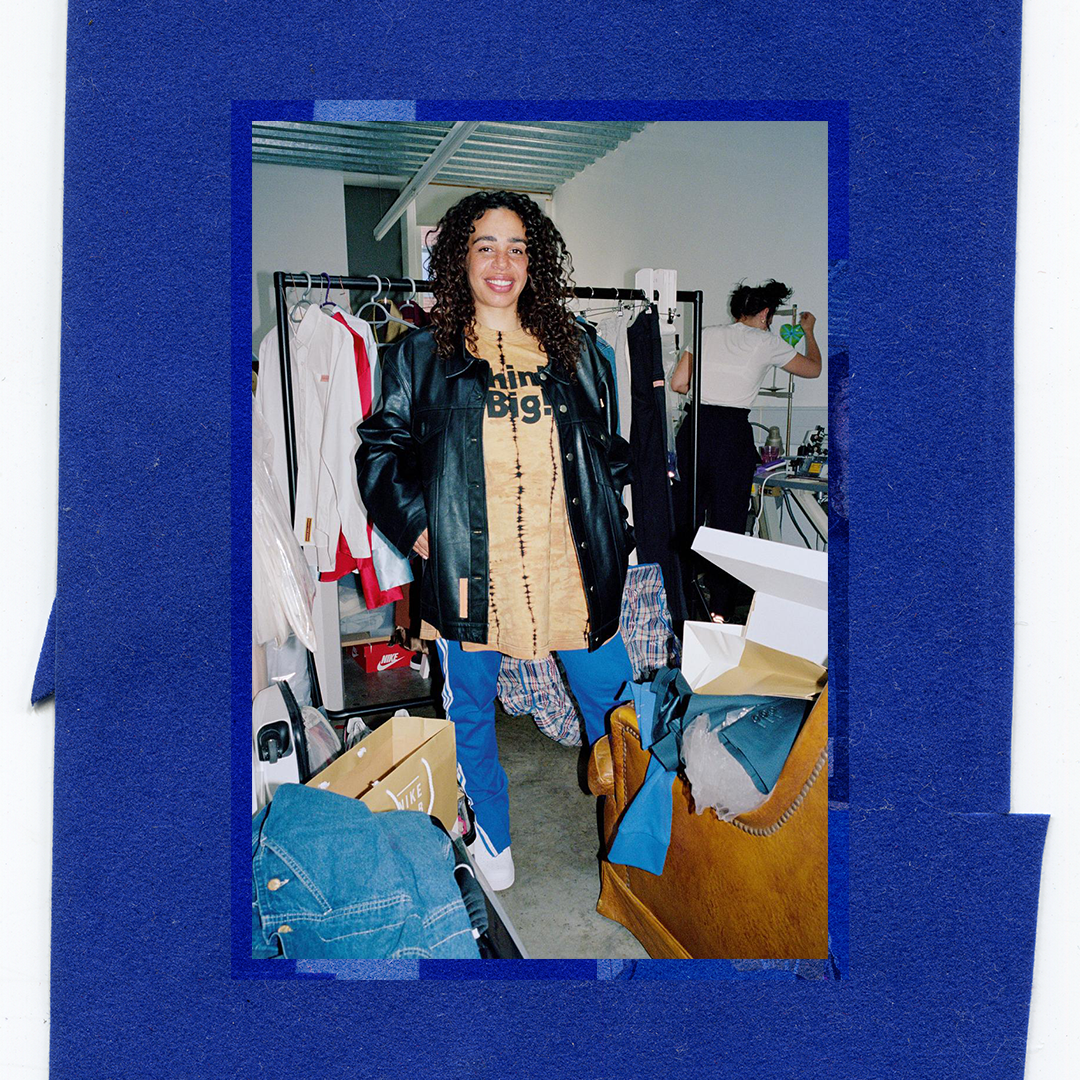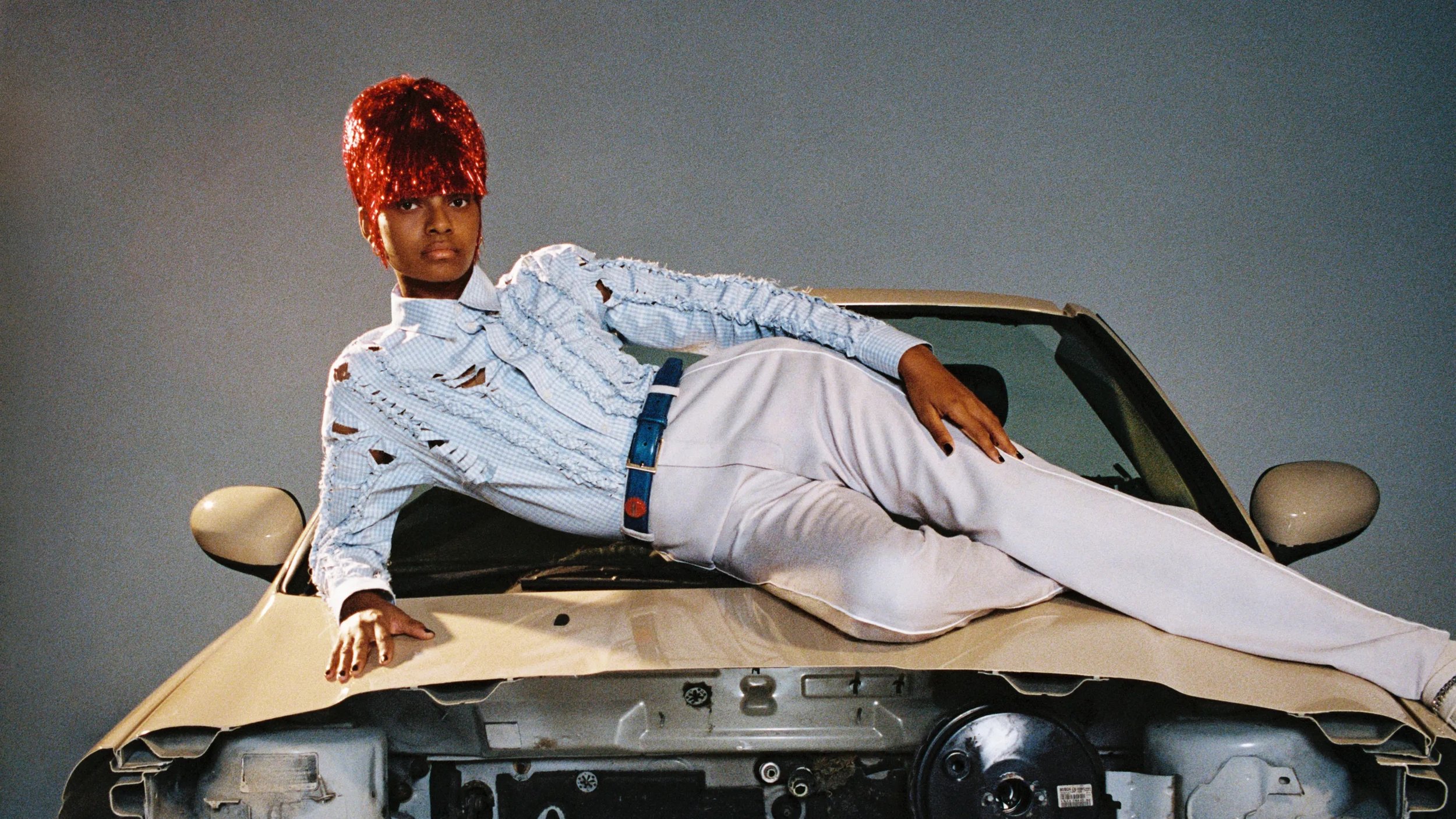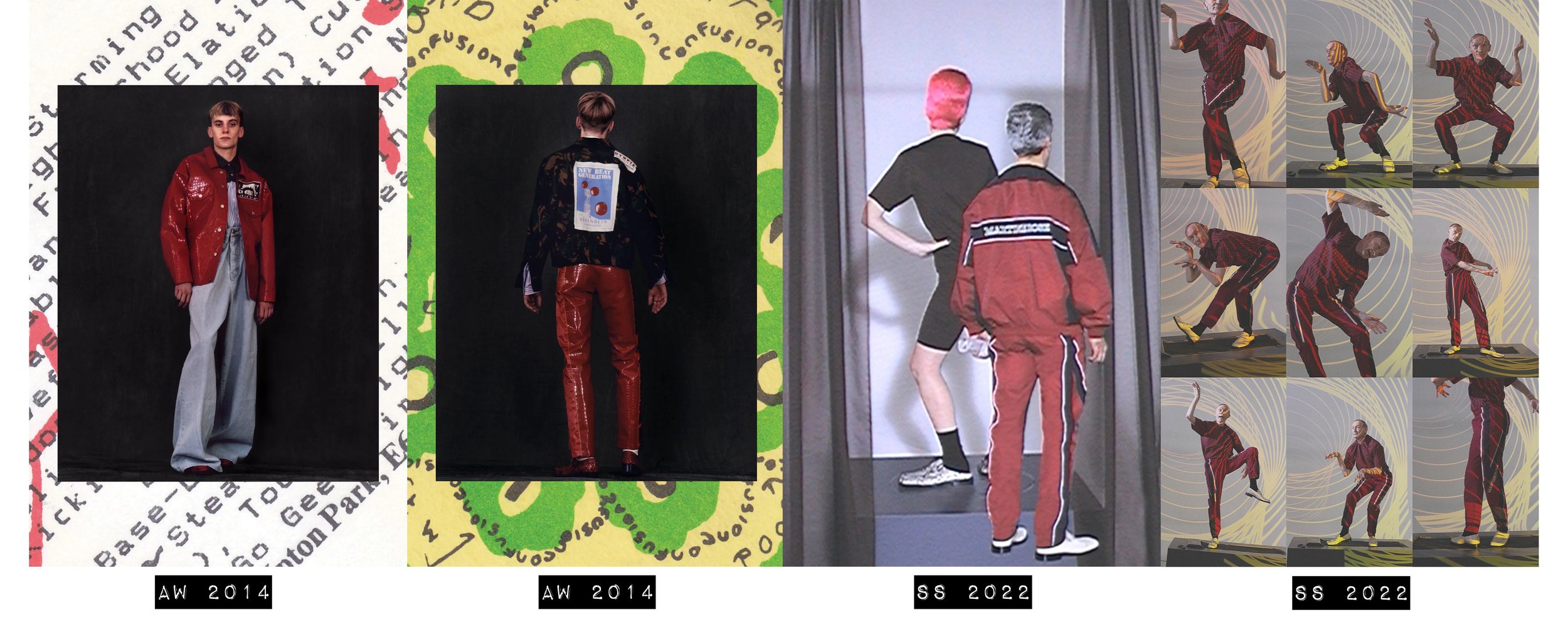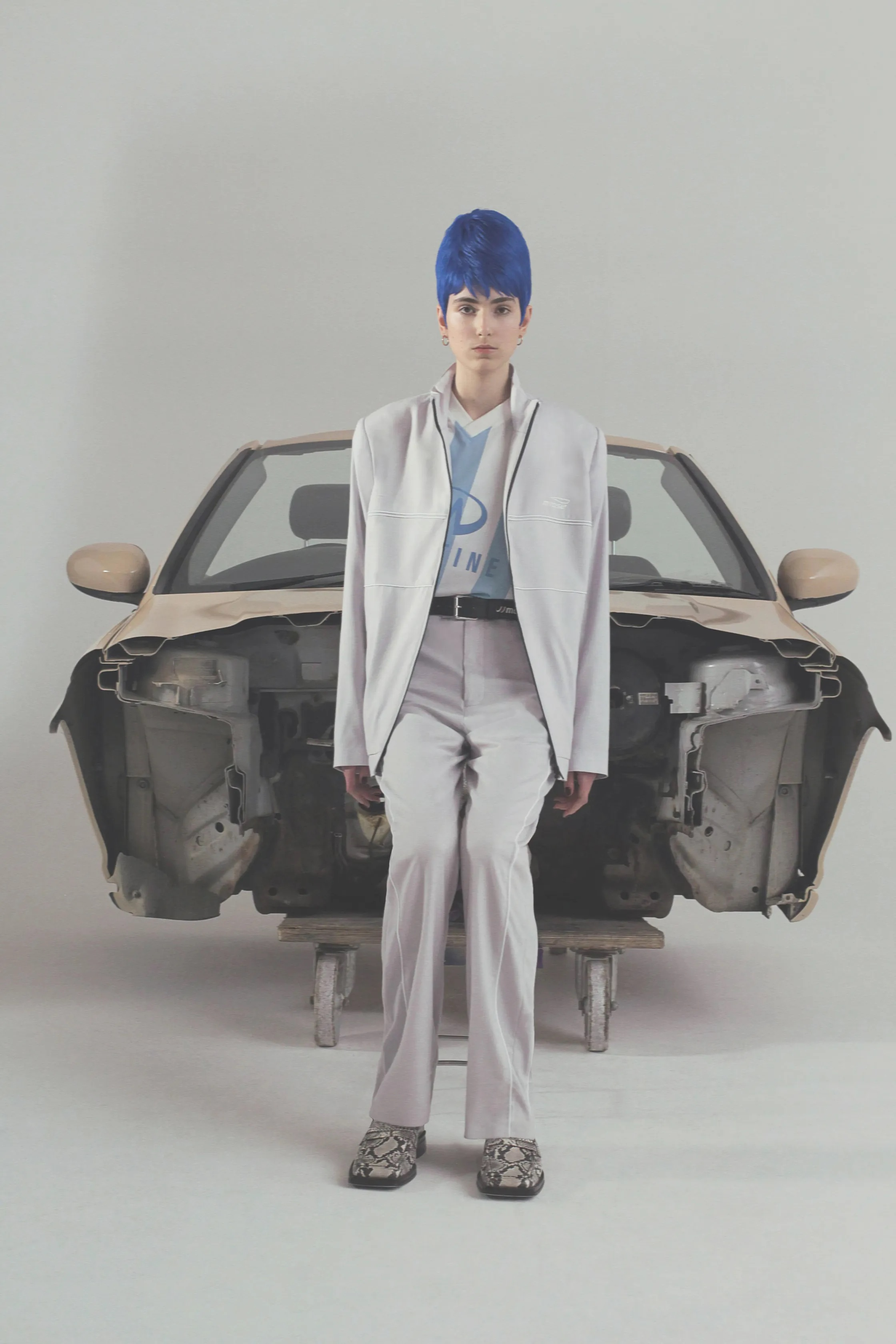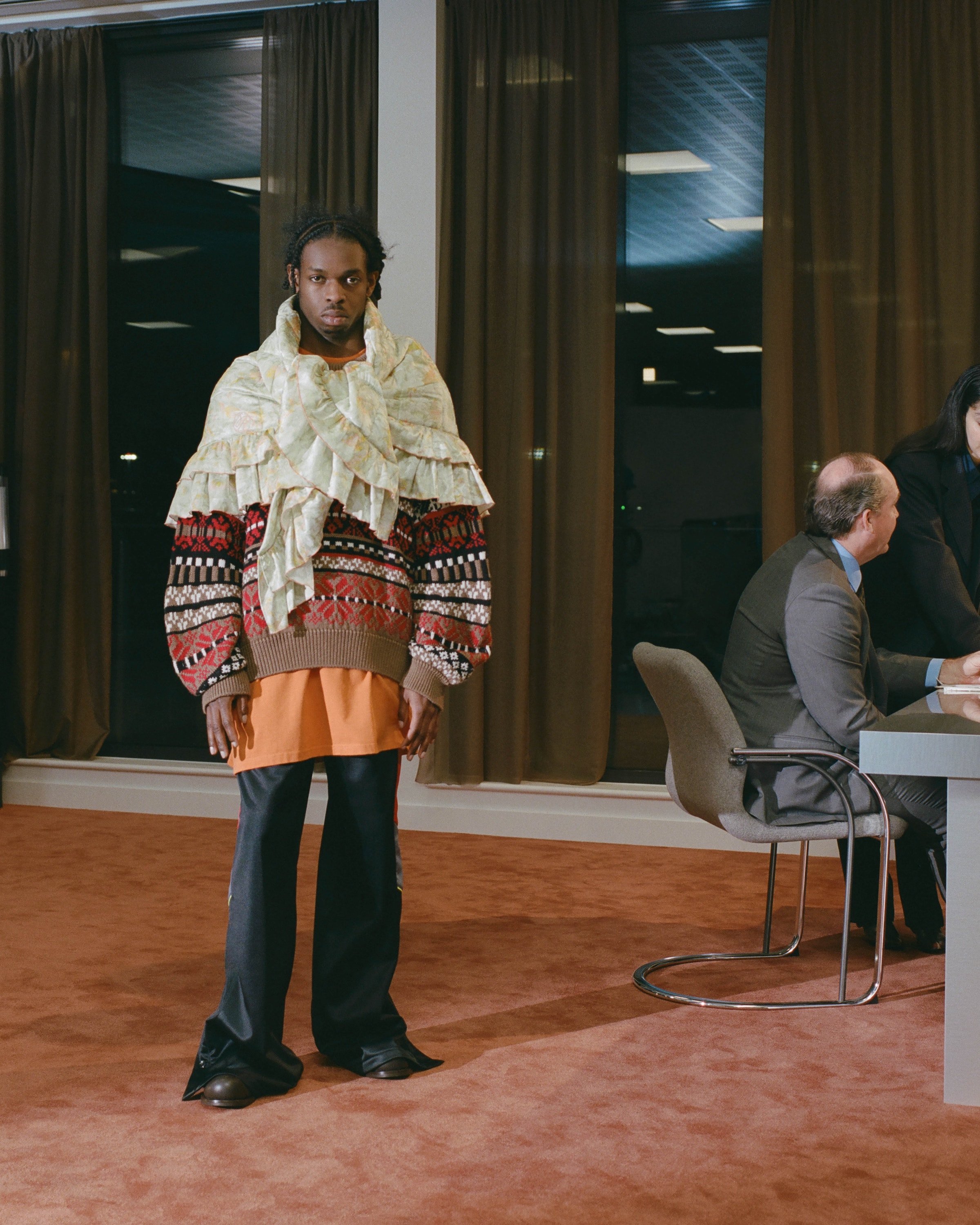Martine Rose: A Menswear Revolution Through Subcultural London and Rave Culture
Self-made and self-defined, Martine Rose comes from a big British-Jamaican family in South London, which proved to be the perfect incubator for what later became her brand. Her collections are greatly inspired by subcultural London of the ‘80s and ‘90s. A lot of this inspiration stems from Rose’s siblings and cousins, who she grew up watching get ready to go out partying in the late ‘80s and early ‘90s. The music they listened to, and the circles they roamed in, massively influenced Rose.
Rose’s fascination with subcultures didn’t only rub off on her in her early years, it greatly influenced the beginning of her career. Her first project, a brand of mostly printed t-shirts called “LMNOP” went extinct in 2005. It was only in 2007 that the first iteration of what became the Martine Rose of today was born. In the early years, collaborations with utilitarian Brands such as CAT and Timberland, which themselves have always been deeply rooted within urban and subversive communities, established a guideline for the brand. A young and new interpretation of the old and mundane, all of this while still maintaining a link to its original inspiration.
It’s interesting to see that the big street culture influence of Rose’s early work prevails. Although the contrast between rose's first collection and her later work is stark, the same lines are constant, loose-fitting garments, often with a twist, infused with its imminent street-style DNA.
The influence of rave culture was primarily present in Rose's 2014 AW collection, in which she recreated old rave flyers in the shape of patches, playing in on the nostalgia for her early youth, when she used to watch her cousins and siblings get ready to go out and party in London. She specifically describes one of hers who was really into rave culture, wearing huge t-shirts, baggy pants, and puffy jackets. This was a world that wasn't available to her, which fascinated her even more—the intrigue of seeing someone get ready, go out, and come back hours later, in the same clothes, having gone through a rave or two. This theme is recurrent, this nostalgia for a time that she lived vicariously through others.
In fact, this motif came back as recently as Rose's Spring Summer 2022 collection, This time around no longer in the form of patches, but directly inspired by party-goers of the past. The lookbook is presented by an unusual array of models, including people of all ages. This collection really was an implosion of everything Martine Rose, a true clash of subcultural entities. Although rave culture elements truly shone, these were directly opposing 1960s and ‘70s silhouettes, reminiscent of the disco days, as well as somewhat New Wave-inspired pieces such as shirt and chino combos with the classic MR twist.
Her influence as a consultant alongside Demnas Gvasalia, creative director of Balenciaga, is palpable, it's undeniable the impact that Rose's expertise and knowledge on the matter have had on the brand. Both Balenciaga and Martine Rose could arguably be the last mainstream brands carrying true subcultural values, as both Gvasalia and Rose are heavily influenced by the niche and obscure. Taking inspiration from quotidian and mundane visual cues but bringing them to a larger-than-life level.
Rose being solely a menswear designer, she's explored and experimented with classic silhouettes, her signature being wide-shouldered and loose-fitting clothes, that appear again and again in her collections, inspired by her childhood, like visual clippings from her youth. In recent years we've seen a revolution in menswear, while menswear was often dull and quite standardized in the late 2000s, and while some designers were still fixated on a view of the "classical" man, Rose decided to break this cycle, it was then that she started questioning what menswear is. In return, this established what the Martine Rose man is, who according to Rose is hard enough to describe. In an interview with Document Journal, she said, “You do these classic business courses, and they tell you very much to identify your target market. And I always found it really hard, and when I tried to do that, it always proved to me that I was wrong. Because I would say 25 to 40 or 18 to 25 and then a 45 or 50-year-old man would be wearing it or a 17-year-old girl. I think that’s the kind of thing that I’ve come to accept and understand about what I do. It’s a really broad spectrum of people—men, women, young, old. There definitely isn’t one guy that I can define.”
So it’s clear, while Martine Rose started out as a Menswear company, it became bigger than that, its undeniable influence directly sourced from Martine herself culminated in what is today an inclusive environment that caters to people of all ages that wish to live the Martine Rose lifestyle. Although the brand is menswear, all genders, all ages, and all people are given a warm welcome at Martine Rose.
Although the designer herself was very much established within the fashion bubble, it’s only in recent years that the mainstream has been reached. It's incredibly exciting to see such a brand with such a beautiful vision and ethos given this much recognition. It makes us wonder what else Rose herself will accomplish in the near future. With rumors of her being considered as a contender for Louis Vuitton’s Menswear department, it’s clear that her journey has just started, and it’s the imminent effect on the way we’ll perceive not only menswear but fashion in general in the coming years.
